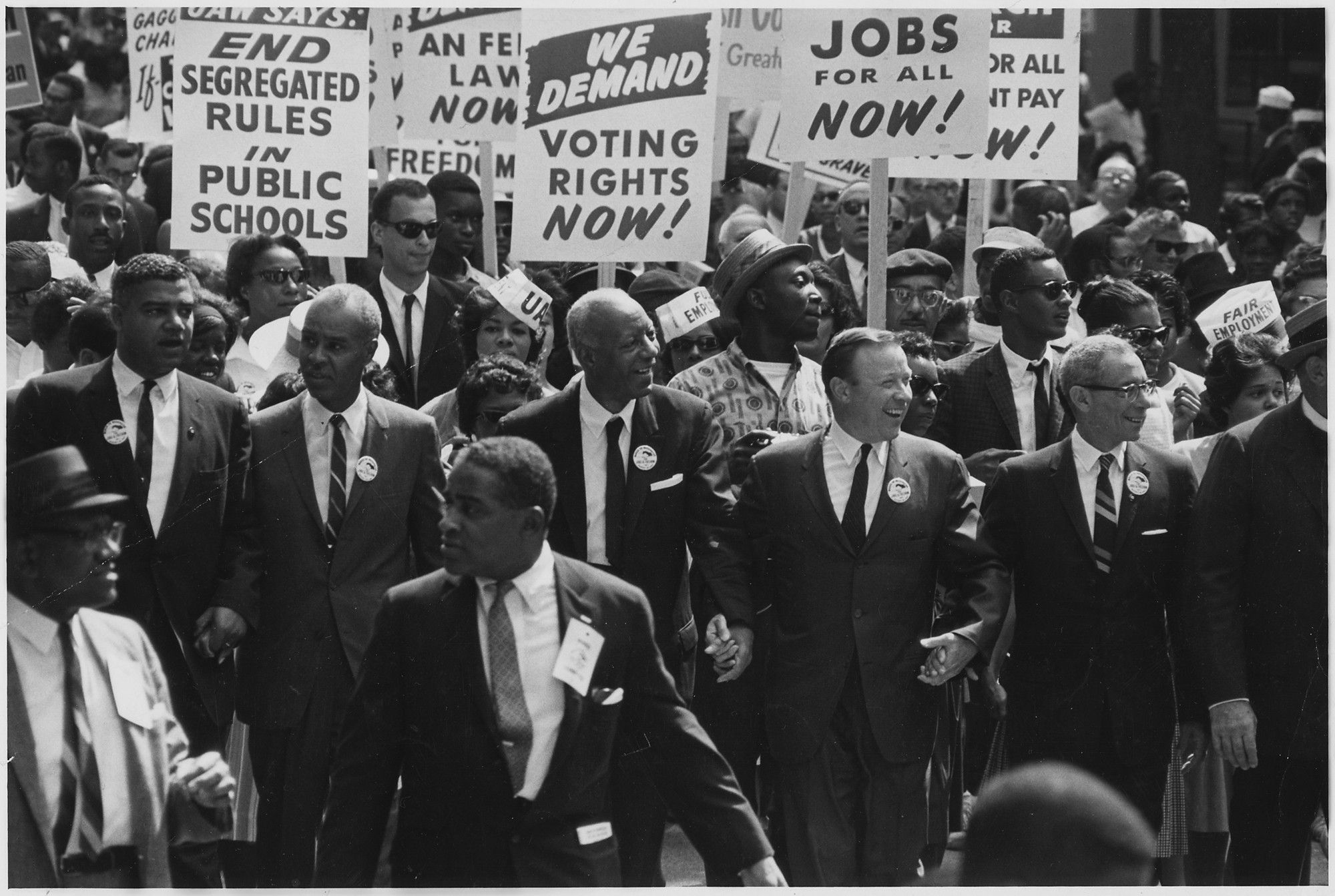Bill of Rights
Seeing the Big Picture
All documents and text associated with this activity are printed below, followed by a worksheet for student responses.Introduction
The Bill of Rights are the first ten amendments to the United States Constitution. These amendments were ratified on December 15, 1791. Match the correct image to the Amendment it represents.Name:
Class:
Class:
Worksheet
Bill of Rights
Seeing the Big Picture
Examine the documents and text included in this activity. Consider how each document or piece of text relates to each other and create matched pairs. Write the text or document number next to its match below. Write your conclusion response in the space provided.1
2
3
4
5
6
7
8
9
10
11
12
1
Activity Element
" In suits at common law, [...], the right of trial by jury shall be preserved, [...]". -7th Amendment
2
Activity Element
"Excessive bail shall not be required, nor excessive fines imposed, nor cruel and unusual punishments inflicted. "
-8th Amendment
-8th Amendment
3
Activity Element
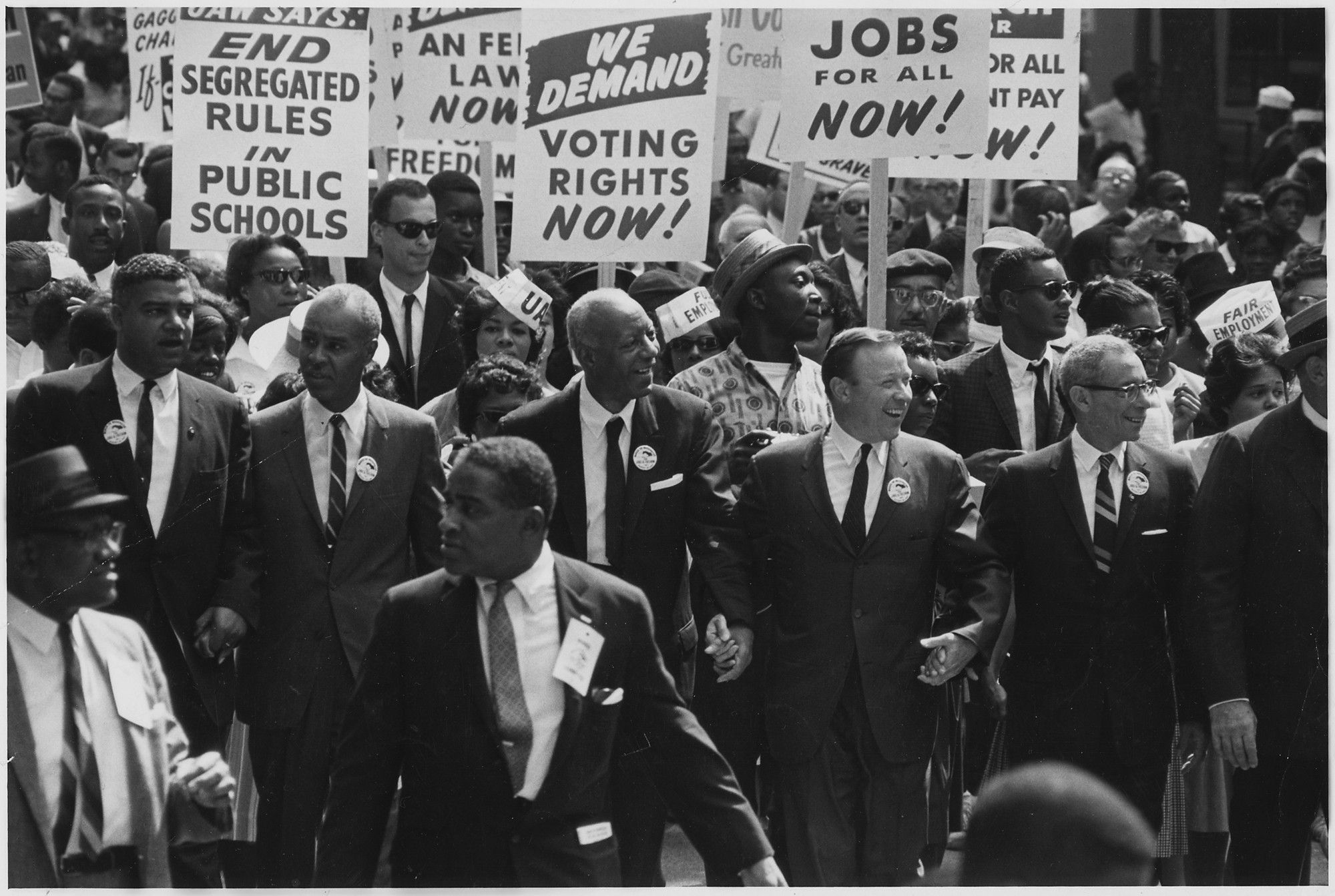
4
Activity Element
The first 10 amendments to the United States Constitution are called The Bill of Rights.
5
Activity Element
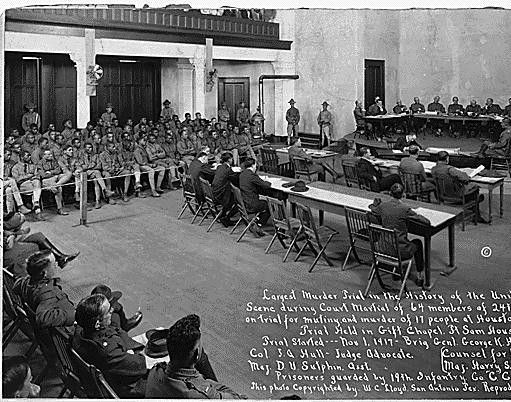
6
Activity Element
"Congress shall make no law abridging the [...]right of the people peaceably to assemble, and to petition the Government for a redress of grievances. "
-1st Amendment
-1st Amendment
7
Activity Element
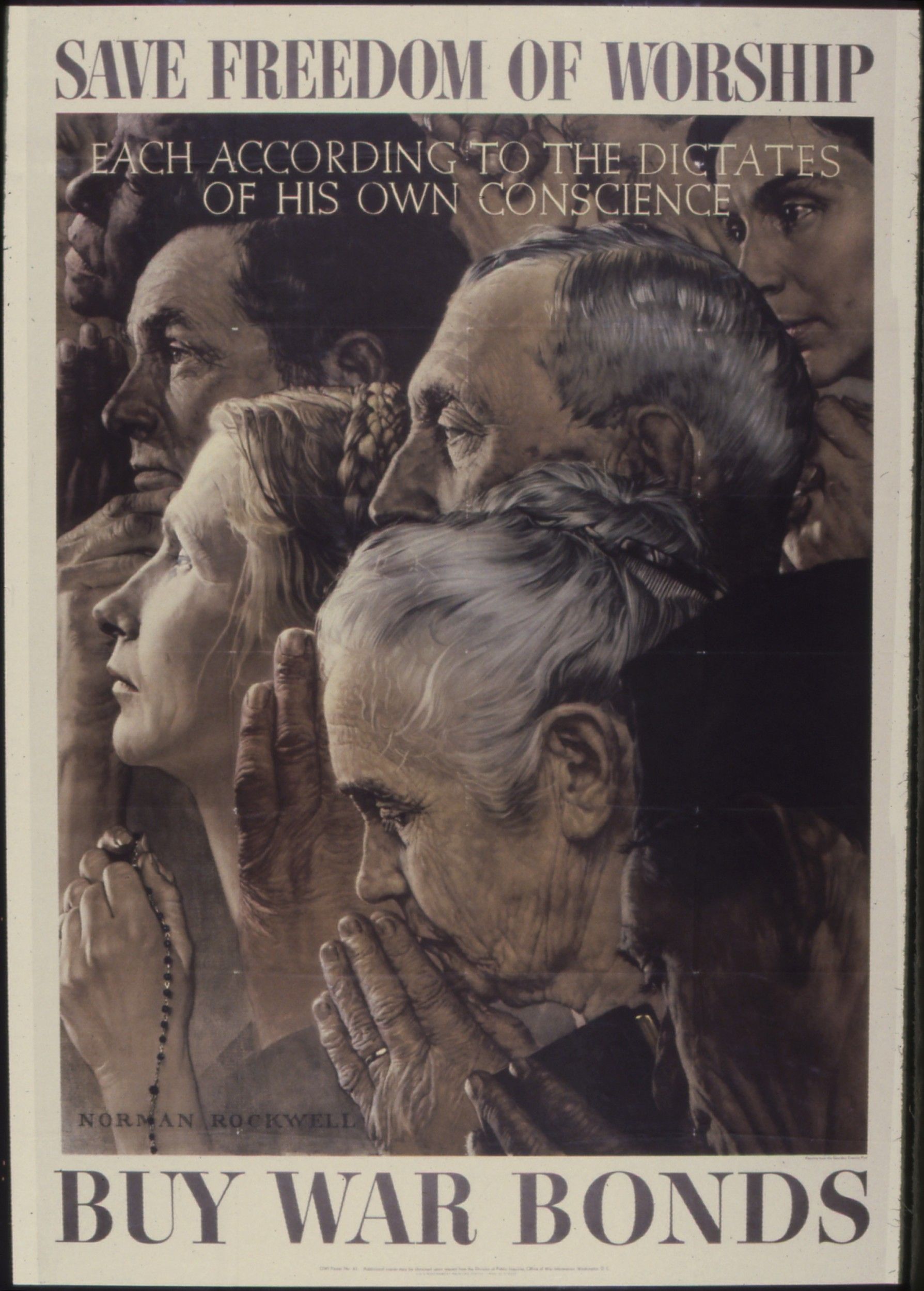
8
Activity Element
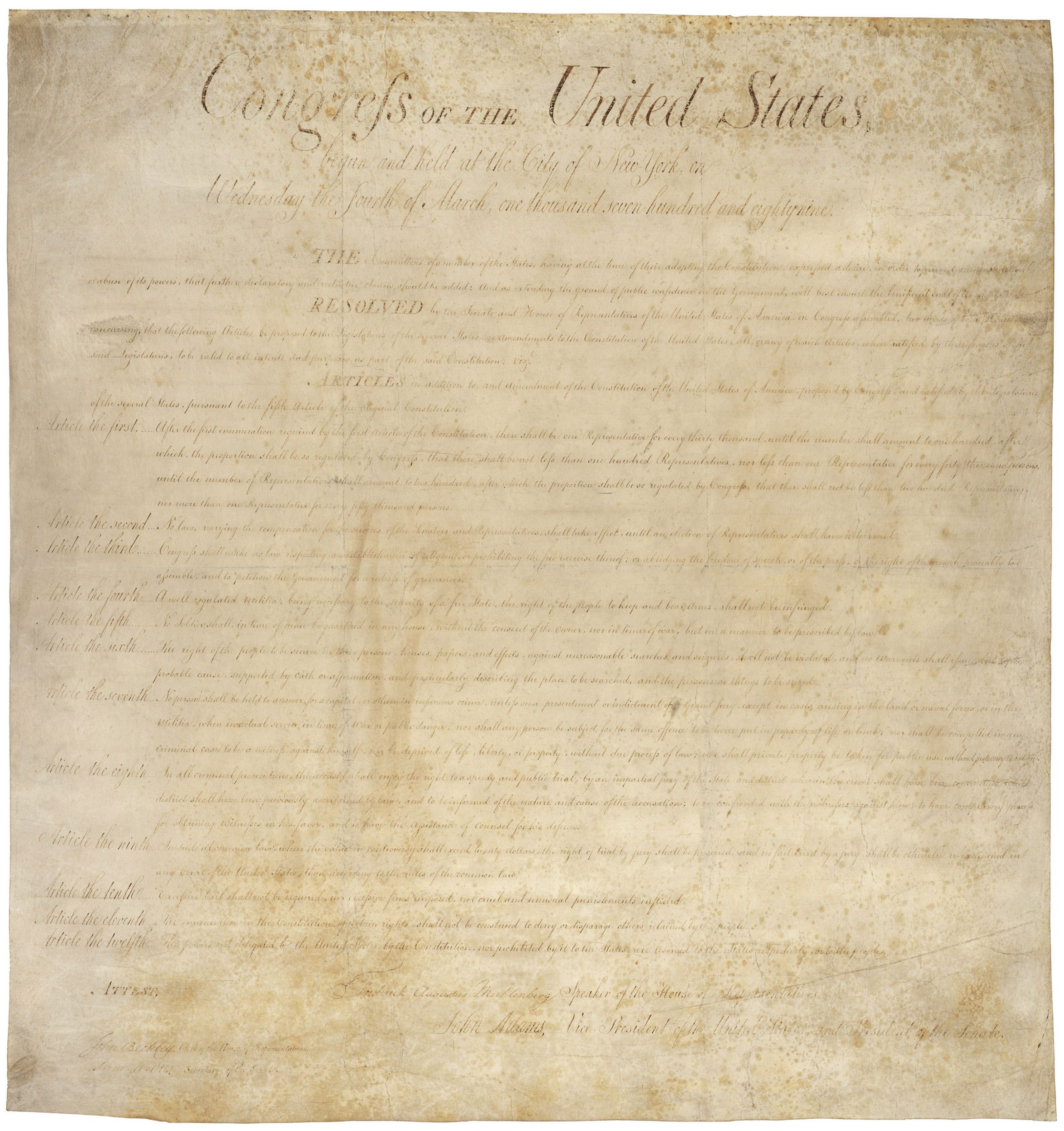
9
Activity Element
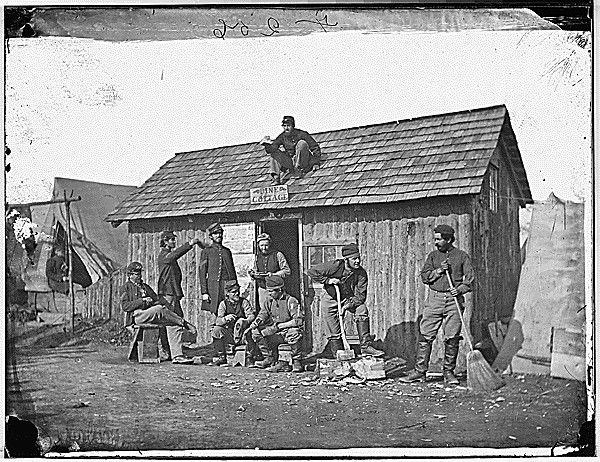
10
Activity Element
"Congress shall make no law respecting an establishment of religion, or prohibiting the free exercise thereof [...]"
-1st Amendment
-1st Amendment
11
Activity Element
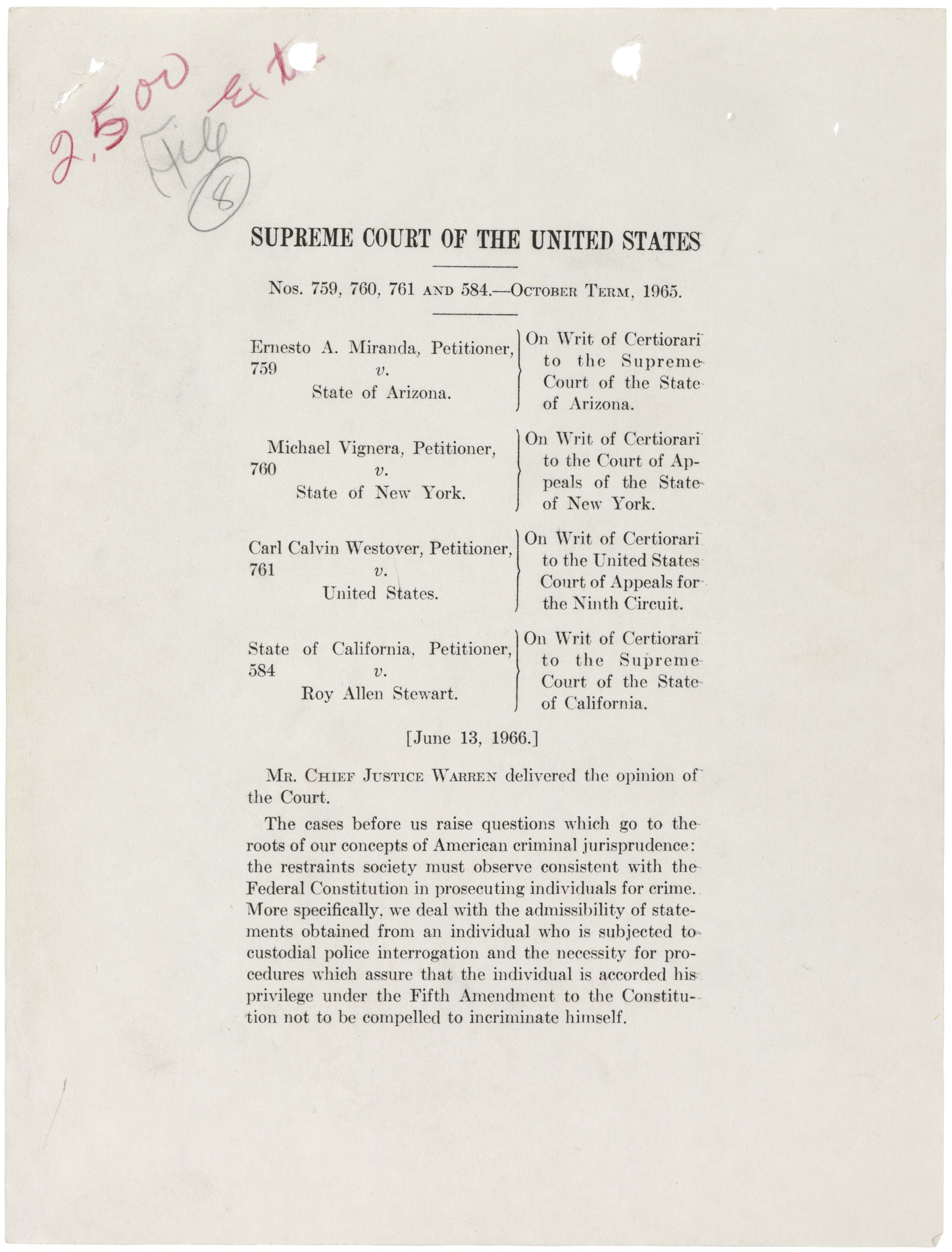
12
Activity Element
"In all criminal prosecutions, the accused shall enjoy the right to a speedy and public trial, by an impartial jury [...] and to be informed of the nature and cause of the accusation; to be confronted with the witnesses against him; [...] and to have the Assistance of Counsel for his defense. "
- 6th Amendment
- 6th Amendment
13
Activity Element
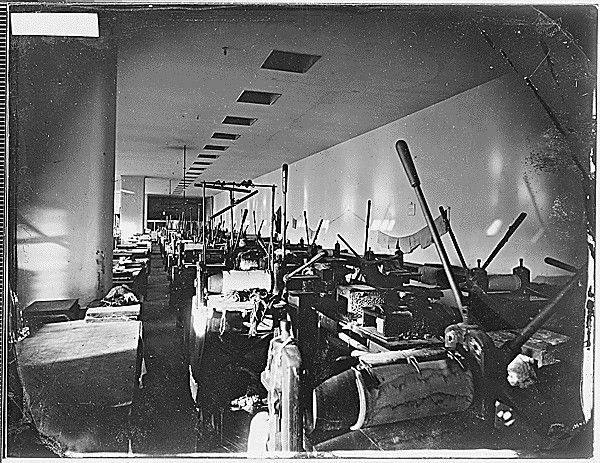
14
Activity Element
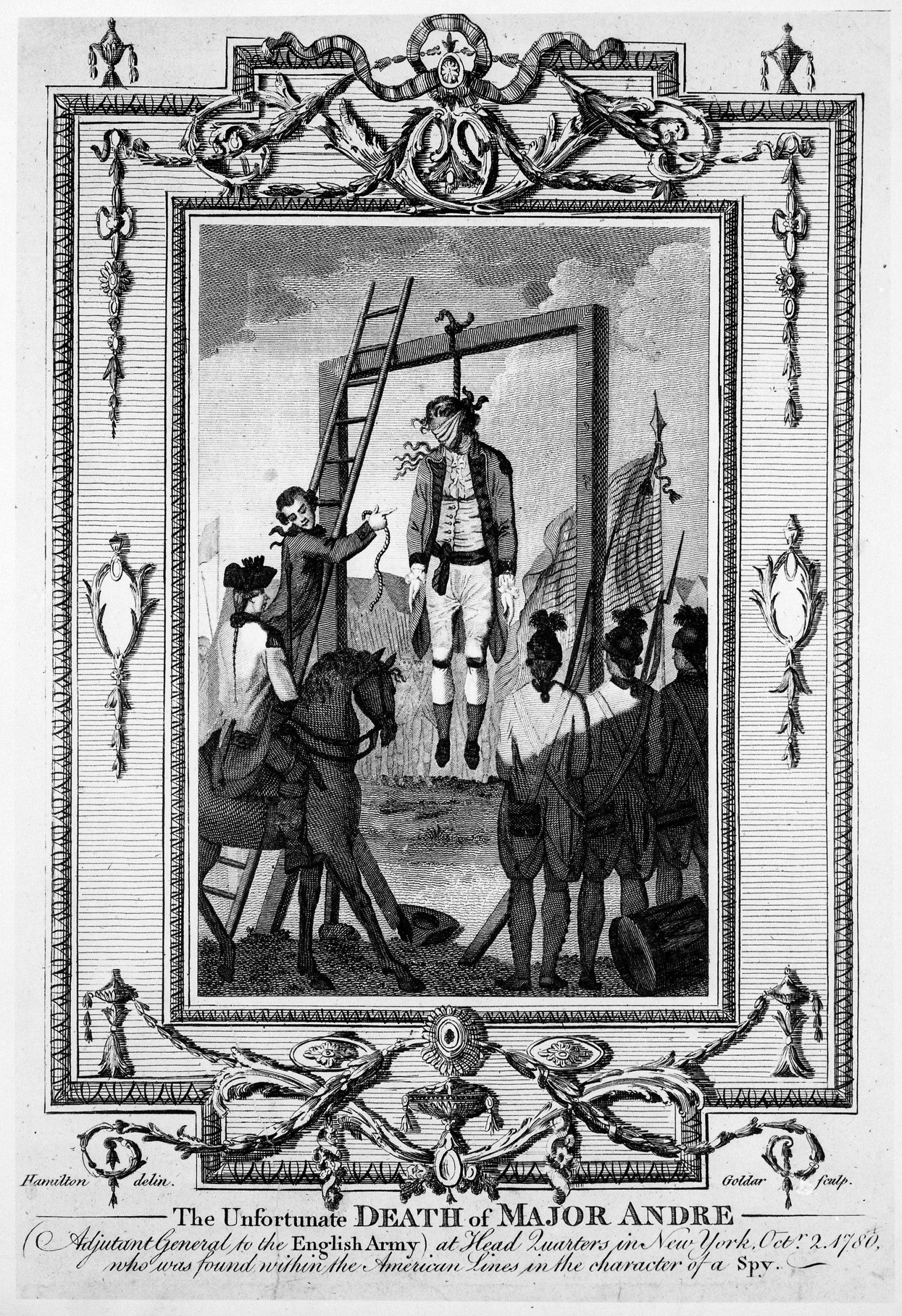
15
Activity Element
"Congress shall make no law [...] abridging the freedom of speech, or of the press"
- 1st Amendment
- 1st Amendment
16
Activity Element
"The right of the people to be secure in their persons, houses, papers, and effects, against unreasonable searches and seizures, [...], and no Warrants shall issue, but upon probable cause, [...]."
-4th Amendment
-4th Amendment
17
Activity Element
Forced quartering of soldiers out of war time is prohibited by the 3rd amendment.
18
Activity Element
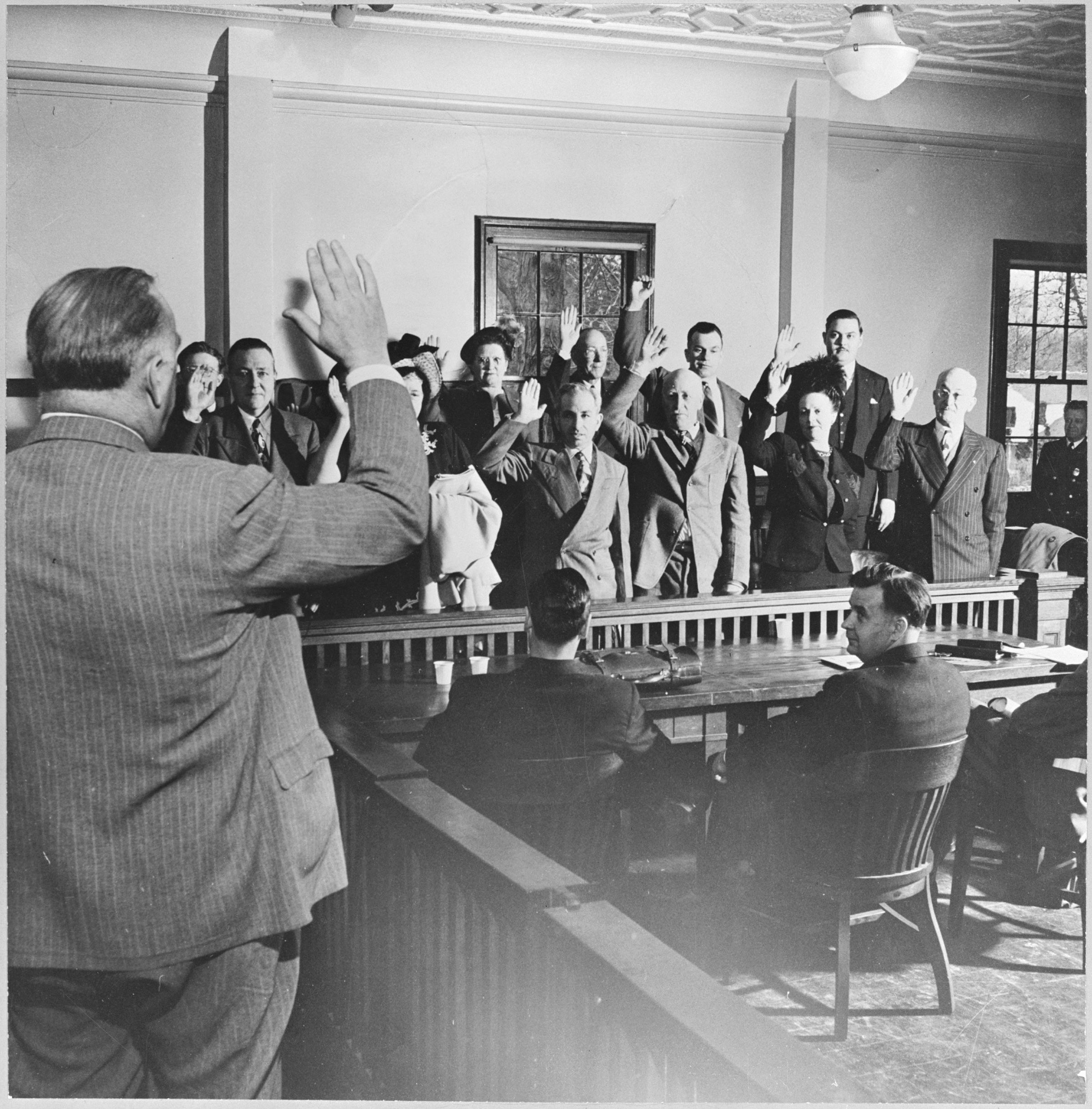
19
Activity Element
"A well regulated Militia being necessary to the security of a free State, the right of the people to keep and bear Arms, shall not be infringed. "
-2nd Amendment
-2nd Amendment
20
Activity Element
"No person shall be held to answer for any capital, or otherwise infamous crime, [...]; nor shall any person be subject for the same offence to be twice put in jeopardy of life or limb; nor shall be compelled in any criminal case to be a witness against himself, nor be deprived of life, liberty, or property, without due process of law; [...]"
-5th Amendment
-5th Amendment
21
Activity Element
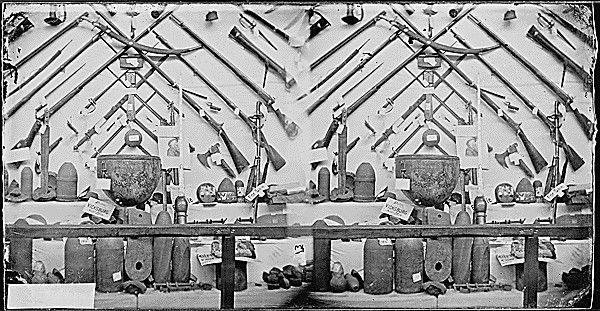
22
Activity Element

23
Activity Element
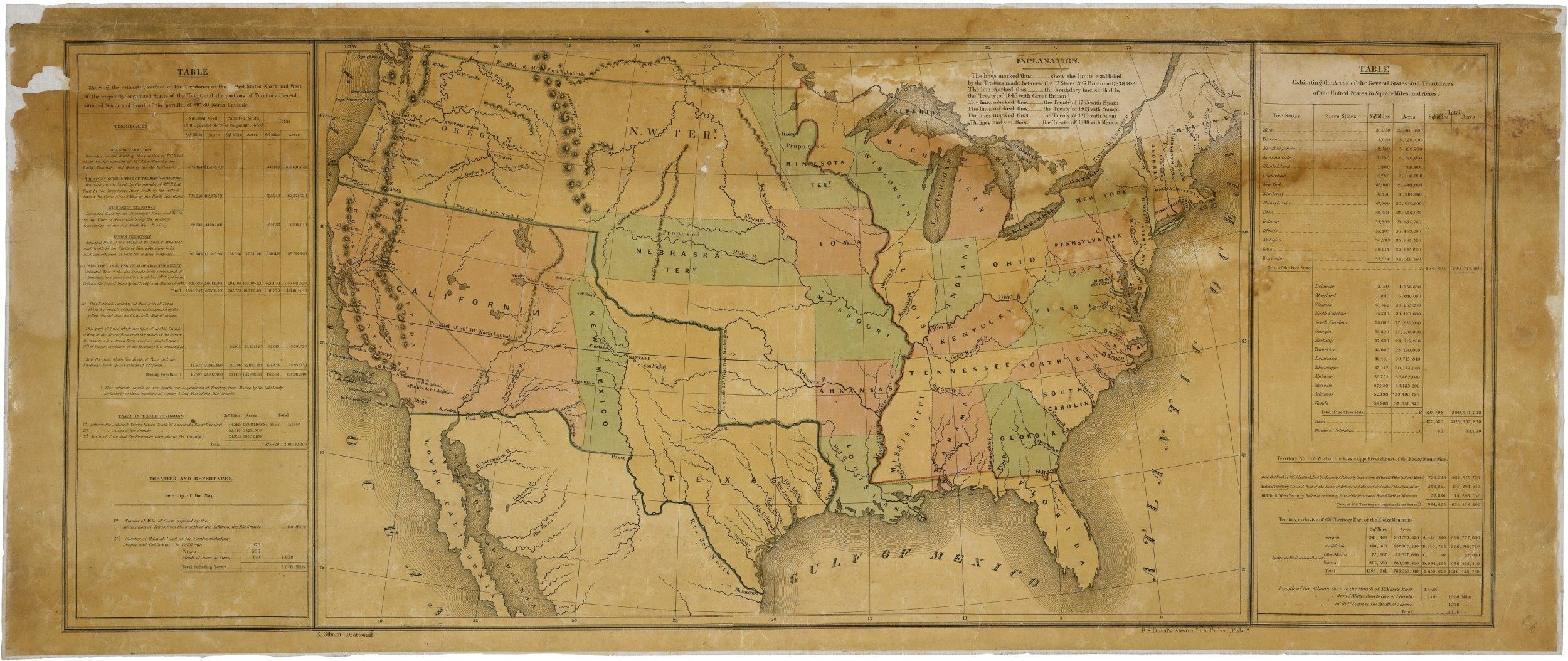
24
Activity Element
These amendments were to make sure that any rights the framers did not outline specifically were still held b individuals or the states.
Culminating Document
Patrick Henry addressing the Virginia Assembly, 1765. Engraving attributed to H.B. Hall after Alonzo Chappel.
1765 (artwork 1867)
This is a copy of an engraving by H.B Hall based on the original painting by Alonzo Chappel. The full title is "Patrick Henry Addressing the Virginia Assembly. 1765. Engraving attributed to H. B. Hall after Alonzo Chappel, published 1867."
This primary source comes from the Records from the Office of War Information.
National Archives Identifier: 535746
Full Citation: Photograph 208-LU-25K(4); Patrick Henry addressing the Virginia Assembly, 1765. Engraving attributed to H.B. Hall after Alonzo Chappel.; 1765 (artwork 1867); Photographs Depicting "Life in the United States", 1942 - 1946; Records from the Office of War Information, ; National Archives at College Park, College Park, MD. [Online Version, https://docsteach.org/documents/document/patrick-henry-virginia-assembly, April 26, 2024]Patrick Henry addressing the Virginia Assembly, 1765. Engraving attributed to H.B. Hall after Alonzo Chappel.
Page 1
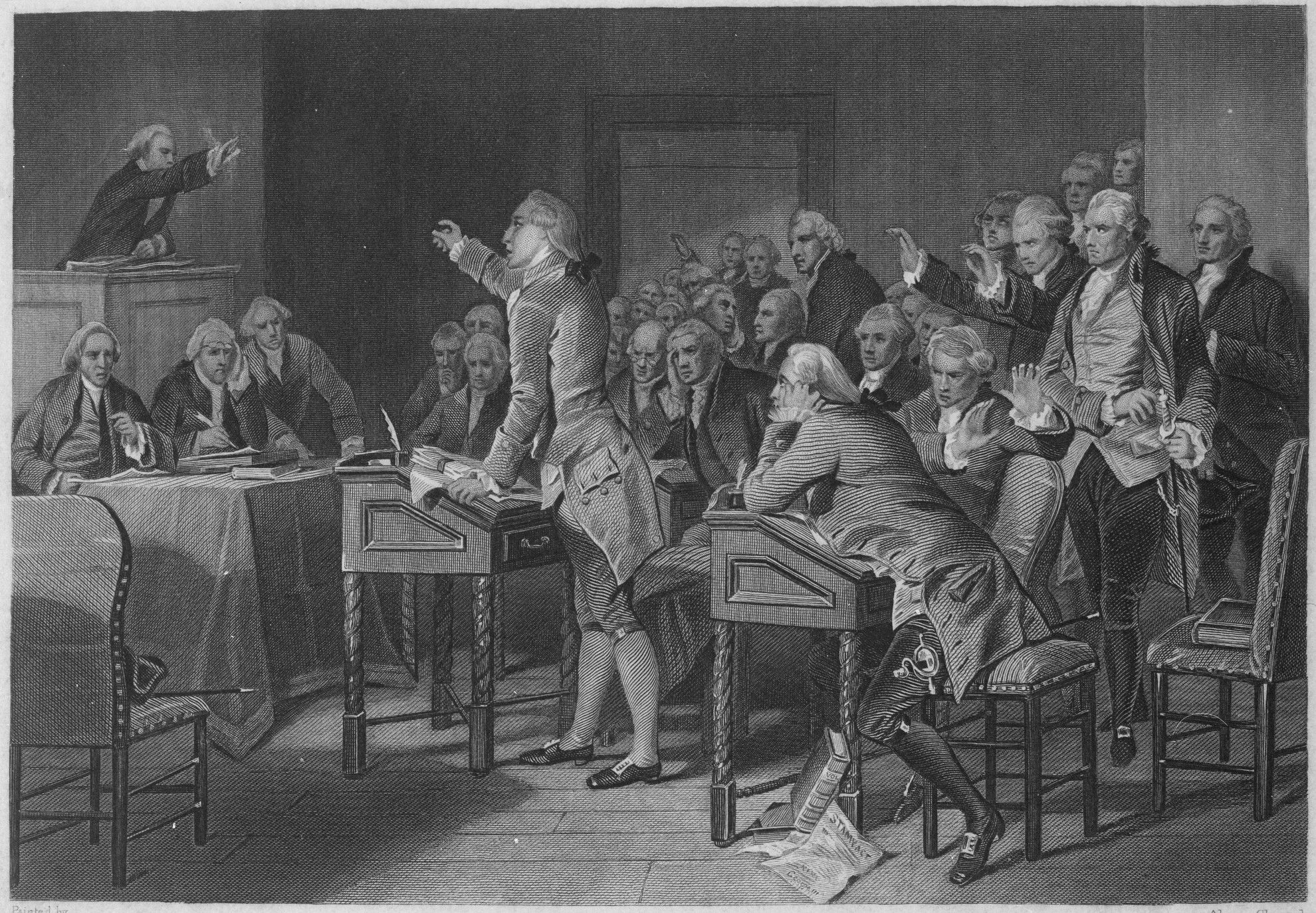
Conclusion
Bill of Rights
Seeing the Big Picture
Now that you have finished the activity think about how the Bill of Rights affects your everyday life. Pick one of the first 10 Amendments and explain how it impacts you in your everyday life.Your Response
Document
Bill of Rights
9/25/1789
This document is the Federal Government's official copy of the joint resolution of Congress proposing the original Bill of Rights, engrossed on parchment. (Engrossing is the process of copying an official document in a large hand.) It is signed by Frederick Augustus Muhlenberg, Speaker of the House of Representatives, and John Adams, Vice President of the United States and President of the Senate.
The amendments proposed in the Bill of Rights defined citizens' rights in relation to the newly established government under the new United States Constitution. During the debates on the adoption of the Constitution, its opponents repeatedly charged that the Constitution as drafted would open the way to tyranny by the central government.
Fresh in their minds was the memory of the British violation of civil rights before and during the Revolution. They demanded a "bill of rights" that would spell out the immunities of individual citizens. Several state conventions, in their formal ratification of the Constitution, asked for such amendments; others ratified the Constitution with the understanding that the amendments would be offered.
The First Federal Congress took up the matter and proposed 12 articles to the states for ratification on September 25, 1789. (This document shows those 12.) Ten of the 12 proposed amendments were ratified by three-fourths of the states to become part the Constitution.
Articles 3 to 12, ratified December 15, 1791, constitute the first 10 amendments of the Constitution (what are commonly referred to as the Bill of Rights). Article 2 concerning "varying the compensation for the services of the Senators and Representatives" was finally ratified on May 7, 1992 as the 27th Amendment to the Constitution. Article 1, that concerns the number of constituents for each Representative, was never ratified.
The amendments proposed in the Bill of Rights defined citizens' rights in relation to the newly established government under the new United States Constitution. During the debates on the adoption of the Constitution, its opponents repeatedly charged that the Constitution as drafted would open the way to tyranny by the central government.
Fresh in their minds was the memory of the British violation of civil rights before and during the Revolution. They demanded a "bill of rights" that would spell out the immunities of individual citizens. Several state conventions, in their formal ratification of the Constitution, asked for such amendments; others ratified the Constitution with the understanding that the amendments would be offered.
The First Federal Congress took up the matter and proposed 12 articles to the states for ratification on September 25, 1789. (This document shows those 12.) Ten of the 12 proposed amendments were ratified by three-fourths of the states to become part the Constitution.
Articles 3 to 12, ratified December 15, 1791, constitute the first 10 amendments of the Constitution (what are commonly referred to as the Bill of Rights). Article 2 concerning "varying the compensation for the services of the Senators and Representatives" was finally ratified on May 7, 1992 as the 27th Amendment to the Constitution. Article 1, that concerns the number of constituents for each Representative, was never ratified.
Transcript
Congress of the United Statesbegun and held at the City of New-York, on
Wednesday the fourth of March, one thousand seven hundred and eighty nine.
THE Conventions of a number of the States, having at the time of their adopting the Constitution, expressed a desire, in order to prevent misconstruction or abuse of its powers, that further declaratory and restrictive clauses should be added: And as extending the ground of public confidence in the Government, will best ensure the beneficent ends of its institution.
RESOLVED by the Senate and House of Representatives of the United States of America, in Congress assembled, two thirds of both Houses concurring, that the following Articles be proposed to the Legislatures of the several States, as amendments to the Constitution of the United States, all, or any of which Articles, when ratified by three fourths of the said Legislatures, to be valid to all intents and purposes, as part of the said Constitution; viz.
ARTICLES in addition to, and Amendment of the Constitution of the United States of America, proposed by Congress, and ratified by the Legislatures of the several States, pursuant to the fifth Article of the original Constitution.
Article the first... After the first enumeration required by the first article of the Constitution, there shall be one Representative for every thirty thousand, until the number shall amount to one hundred, after which the proportion shall be so regulated by Congress, that there shall be not less than one hundred Representatives, nor less than one Representative for every forty thousand persons, until the number of Representatives shall amount to two hundred; after which the proportion shall be so regulated by Congress, that there shall not be less than two hundred Representatives, nor more than one Representative for every fifty thousand persons.
Article the second... No law, varying the compensation for the services of the Senators and Representatives, shall take effect, until an election of Representatives shall have intervened.
Article the third... Congress shall make no law respecting an establishment of religion, or prohibiting the free exercise thereof; or abridging the freedom of speech, or of the press; or the right of the people peaceably to assemble, and to petition the Government for a redress of grievances.
Article the fourth... A well regulated Militia, being necessary to the security of a free State, the right of the people to keep and bear Arms, shall not be infringed.
Article the fifth... No Soldier shall, in time of peace be quartered in any house, without the consent of the Owner, nor in time of war, but in a manner to be prescribed by law.
Article the sixth... The right of the people to be secure in their persons, houses, papers, and effects, against unreasonable searches and seizures, shall not be violated, and no Warrants shall issue, but upon probable cause, supported by Oath or affirmation, and particularly describing the place to be searched, and the persons or things to be seized.
Article the seventh... No person shall be held to answer for a capital, or otherwise infamous crime, unless on a presentment or indictment of a Grand Jury, except in cases arising in the land or naval forces, or in the Militia, when in actual service in time of War or public danger; nor shall any person be subject for the same offence to be twice put in jeopardy of life or limb; nor shall be compelled in any criminal case to be a witness against himself, nor be deprived of life, liberty, or property, without due process of law; nor shall private property be taken for public use, without just compensation.
Article the eighth... In all criminal prosecutions, the accused shall enjoy the right to a speedy and public trial, by an impartial jury of the State and district wherein the crime shall have been committed, which district shall have been previously ascertained by law, and to be informed of the nature and cause of the accusation; to be confronted with the witnesses against him; to have compulsory process for obtaining witnesses in his favor, and to have the Assistance of Counsel for his defence.
Article the ninth... In suits at common law, where the value in controversy shall exceed twenty dollars, the right of trial by jury shall be preserved, and no fact tried by a jury, shall be otherwise re-examined in any Court of the United States, than according to the rules of the common law.
Article the tenth... Excessive bail shall not be required, nor excessive fines imposed, nor cruel and unusual punishments inflicted.
Article the eleventh... The enumeration in the Constitution, of certain rights, shall not be construed to deny or disparage others retained by the people.
Article the twelfth... The powers not delegated to the United States by the Constitution, nor prohibited by it to the States, are reserved to the States respectively, or to the people.
ATTEST,
Frederick Augustus Muhlenberg, Speaker of the House of Representatives
John Adams, Vice-President of the United States, and President of the Senate
John Beckley, Clerk of the House of Representatives.
Sam. A Otis Secretary of the Senate
This primary source comes from the General Records of the United States Government.
National Archives Identifier: 1408042
Full Citation: Bill of Rights; 9/25/1789; Enrolled Acts and Resolutions of Congress, 1789 - 2011; General Records of the United States Government, ; National Archives Building, Washington, DC. [Online Version, https://docsteach.org/documents/document/bill-of-rights, April 26, 2024]Bill of Rights
Page 1
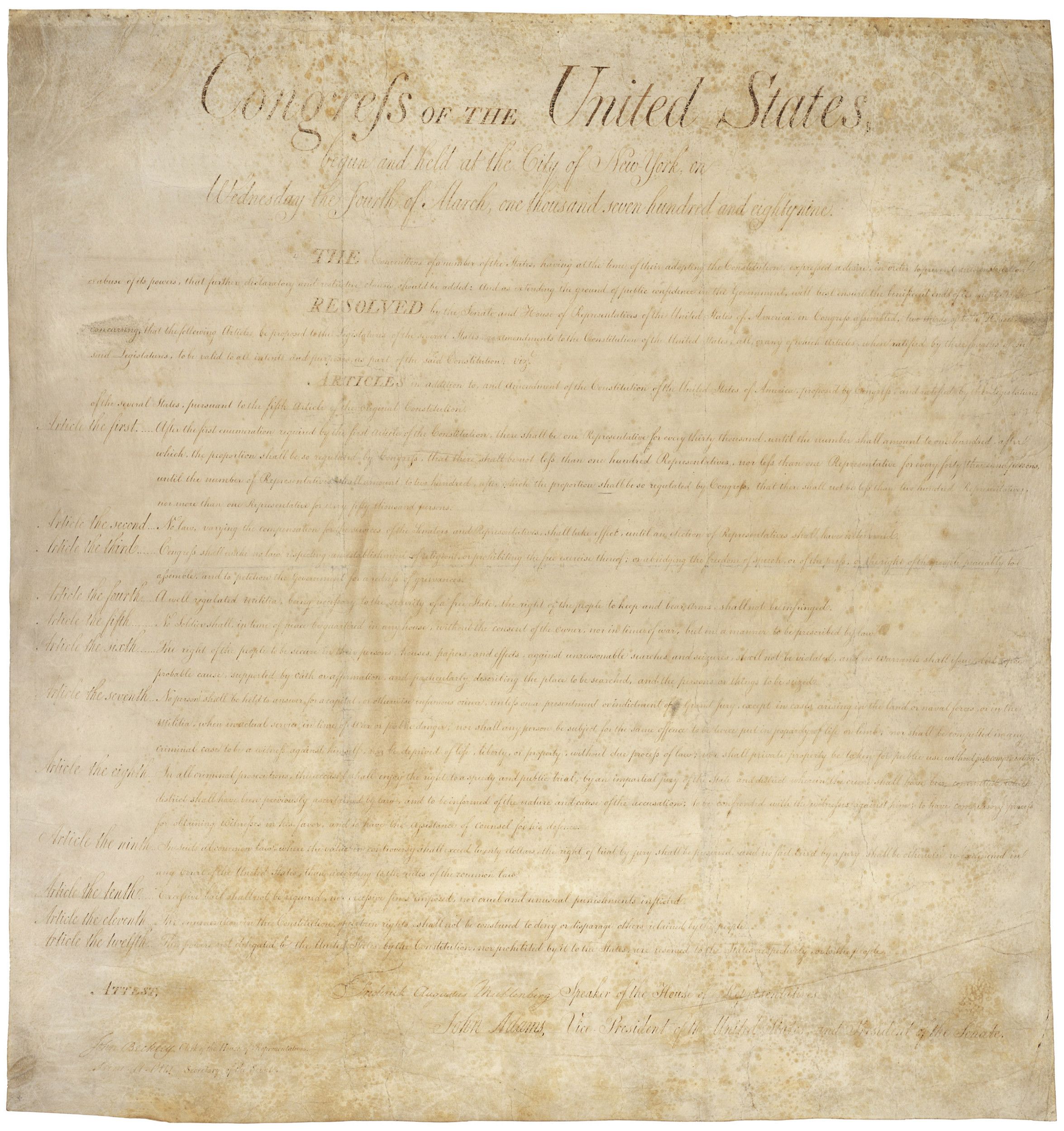
Document
Printing presses at Bureau of Engraving and Printing
ca. 1860 - 1865
This primary source comes from the Records of the Office of the Chief Signal Officer.
National Archives Identifier: 530059
Full Citation: Printing presses at Bureau of Engraving and Printing; ca. 1860 - 1865; Mathew Brady Photographs of Civil War-Era Personalities and Scenes, 1921 - 1940; Records of the Office of the Chief Signal Officer, . [Online Version, https://docsteach.org/documents/document/printing-presses-at-bureau-of-engraving-and-printing, April 26, 2024]Printing presses at Bureau of Engraving and Printing
Page 1
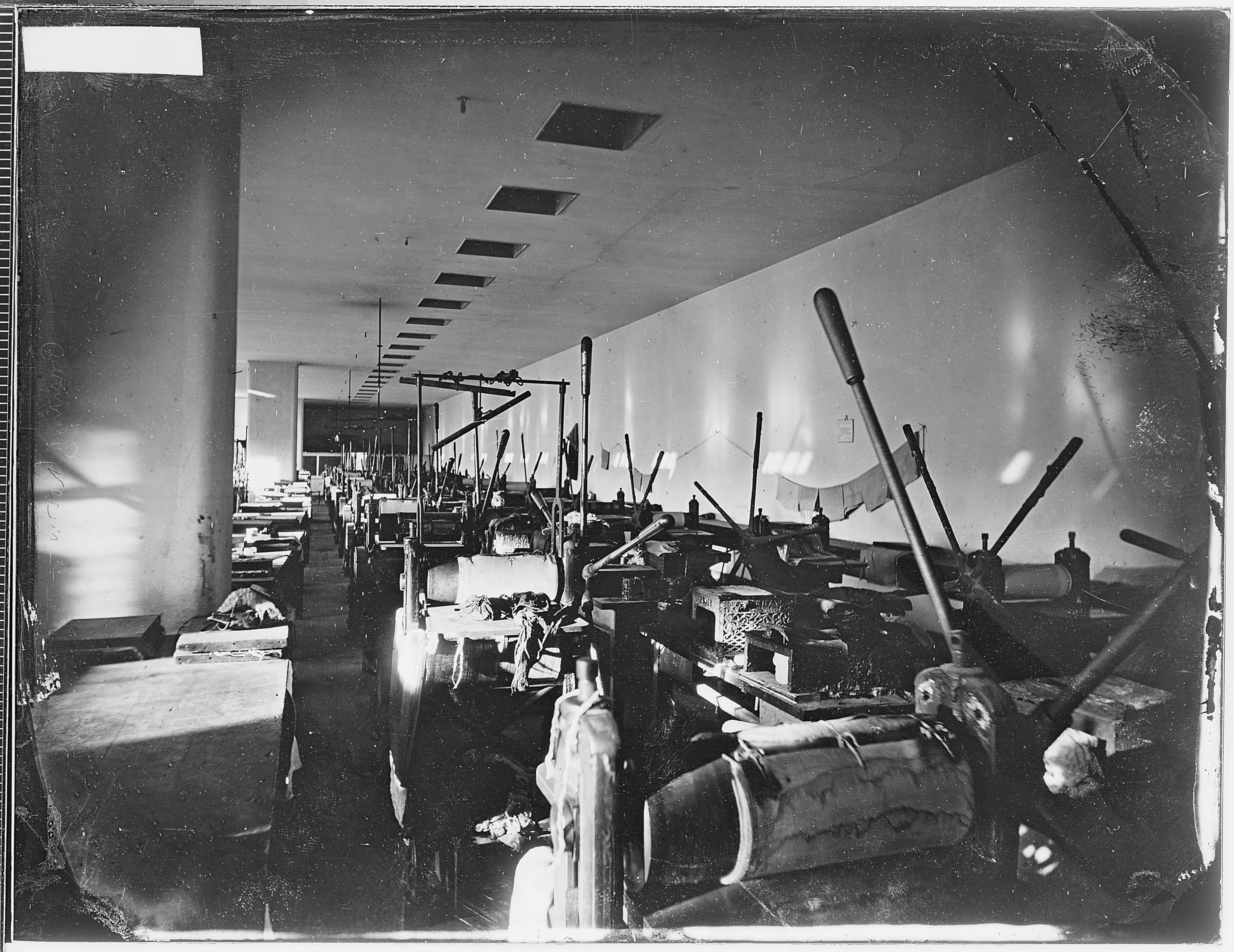
Document
'Pine Cottage', Soldiers' winter quarters
ca. 1860 - 1865
This primary source comes from the Records of the Office of the Chief Signal Officer.
National Archives Identifier: 524675
Full Citation: 'Pine Cottage', Soldiers' winter quarters; ca. 1860 - 1865; Mathew Brady Photographs of Civil War-Era Personalities and Scenes, 1921 - 1940; Records of the Office of the Chief Signal Officer, . [Online Version, https://docsteach.org/documents/document/pine-cottage-soldiers-winter-quarters, April 26, 2024]'Pine Cottage', Soldiers' winter quarters
Page 2
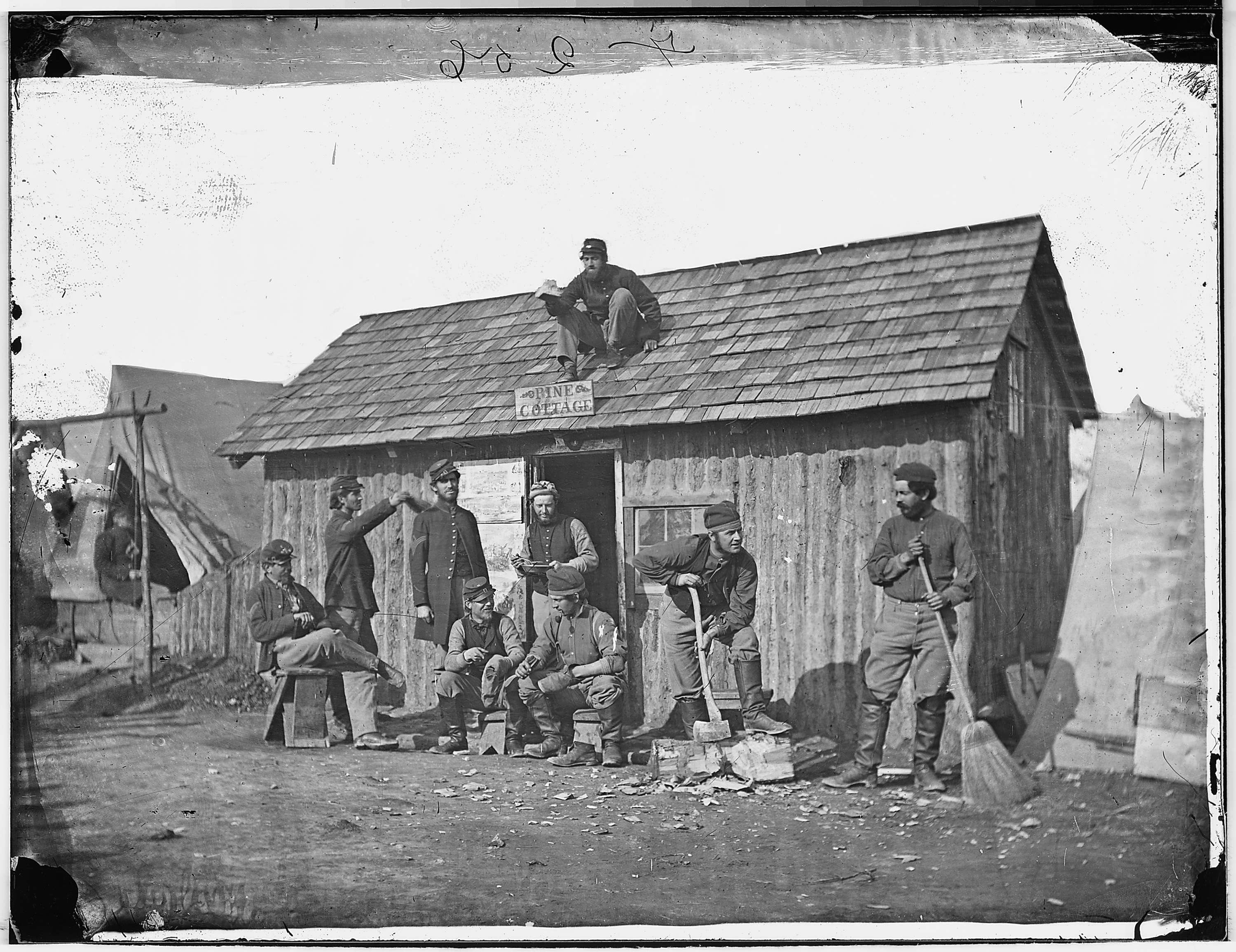
Document
Exhibit of arms
ca. 1860 - 1865
This primary source comes from the Records of the Office of the Chief Signal Officer.
National Archives Identifier: 527758
Full Citation: Exhibit of arms; ca. 1860 - 1865; Mathew Brady Photographs of Civil War-Era Personalities and Scenes, 1921 - 1940; Records of the Office of the Chief Signal Officer, . [Online Version, https://docsteach.org/documents/document/exhibit-of-arms, April 26, 2024]Exhibit of arms
Page 1

Document
Largest Murder Trial in the History of the United States. Scene during Court Martial of 64 members . . .
8/23/1917
The original caption for photograph reads: Largest Murder Trial in the History of the United States. Scene during Court Martial of 64 members of the 24th Infantry United States of America on trial for mutiny and murder of 17 people at Houston, Texas August 23, 1917. Trial held in Gift Chapel Ft Sam Houston. Trial started November 1, 1917, Brigadier General George K. Hunter presiding. Colonel J.A. Hull, Judge Advocate, Council for Defense, Major Harvy S. Grier. Major D.V. Sutphin, Assistant Advocate. Prisoners guarded by 19th Infantry Company C, Captain Carl J. Adler.
This primary source comes from the Records of the War Department General and Special Staffs.
National Archives Identifier: 533485
Full Citation: Photograph 165-WW-127(1); Largest Murder Trial in the History of the United States. Scene during Court Martial of 64 members . . .; 8/23/1917; American Unofficial Collection of World War I Photographs, 1917 - 1918; Records of the War Department General and Special Staffs, ; National Archives at College Park, College Park, MD. [Online Version, https://docsteach.org/documents/document/largest-murder-trial, April 26, 2024]Largest Murder Trial in the History of the United States. Scene during Court Martial of 64 members . . .
Page 1
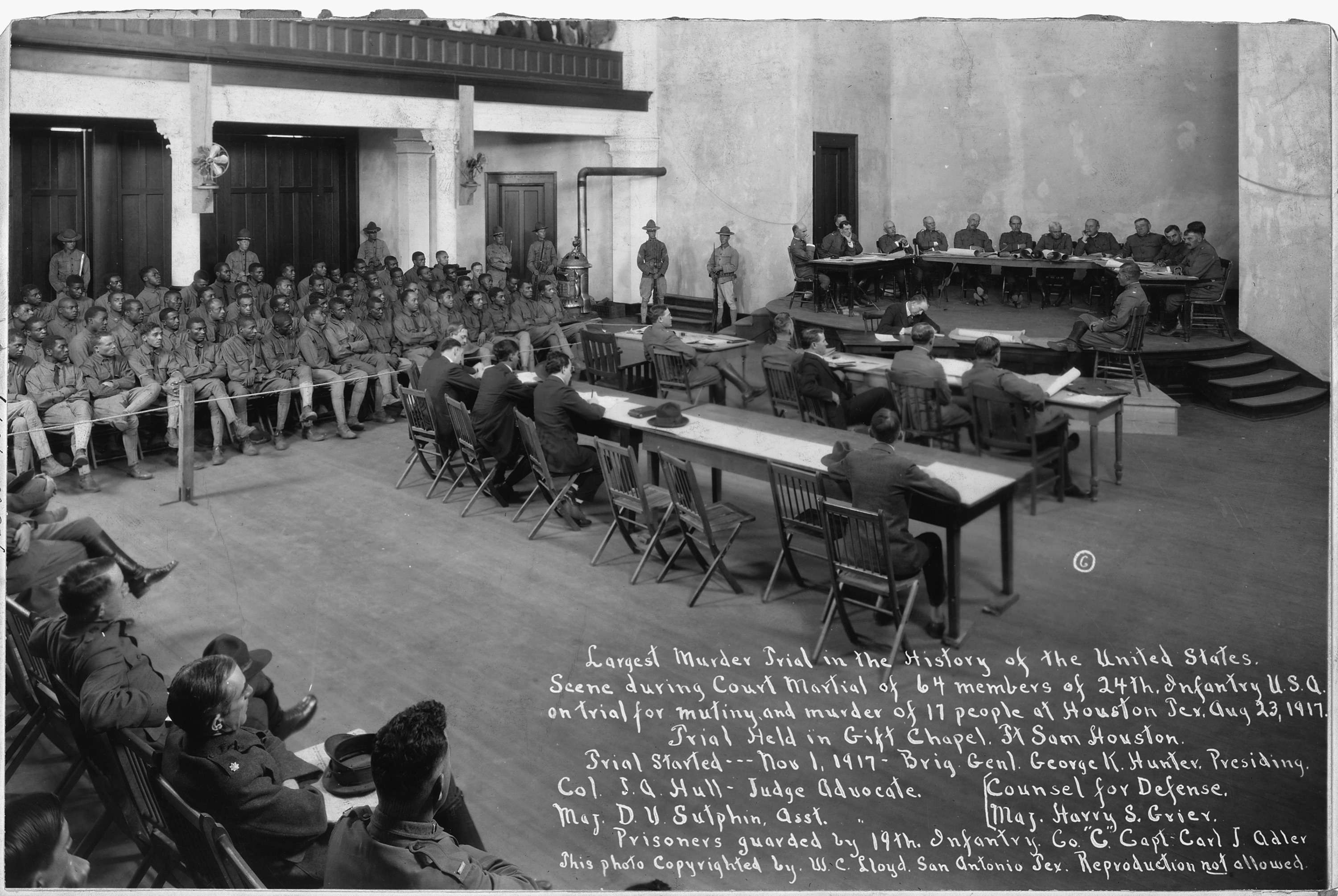
Document
Search warrant for Clay Fourth Apartments, apartment C
11/12/1931
This primary source comes from the General Records of the Department of the Treasury.
National Archives Identifier: 298495
Full Citation: Search warrant for Clay Fourth Apartments, apartment C; 11/12/1931; Seattle Conspiracy (Olmstead) Investigation; Investigative Case Files, 1924 - 1933; General Records of the Department of the Treasury, ; National Archives at Seattle, Seattle, WA. [Online Version, https://docsteach.org/documents/document/search-warrant-for-clay-fourth-apartments-apartment-c, April 26, 2024]Search warrant for Clay Fourth Apartments, apartment C
Page 1

Search warrant for Clay Fourth Apartments, apartment C
Page 2

Document
Opinion of the Court by Chief Justice Earl Warren in the Case of Miranda v. Arizona
6/13/1966
In 1963, Ernesto Miranda was arrested in Arizona and charged with kidnapping, robbery, and rape. When questioned by police, Miranda confessed. He was tried and convicted based on his confession. Miranda appealed his conviction to the U.S. Supreme Court, which ruled in 1966 that statements made by the accused may not be admitted in court without procedural safeguards. Page 31 from the decision describes two of those safeguards—the accused’s right to remain silent and to have an attorney present during questioning. Selected pages are shown.
This primary source comes from the Records of the Supreme Court of the United States.
National Archives Identifier: 597564
Full Citation: Opinion of the Court by Chief Justice Earl Warren in the Case of Miranda v. Arizona; 6/13/1966; Records of the Supreme Court of the United States, . [Online Version, https://docsteach.org/documents/document/opinion-of-the-court-by-chief-justice-earl-warren-in-the-case-of-miranda-v-arizona, April 26, 2024]Opinion of the Court by Chief Justice Earl Warren in the Case of Miranda v. Arizona
Page 1
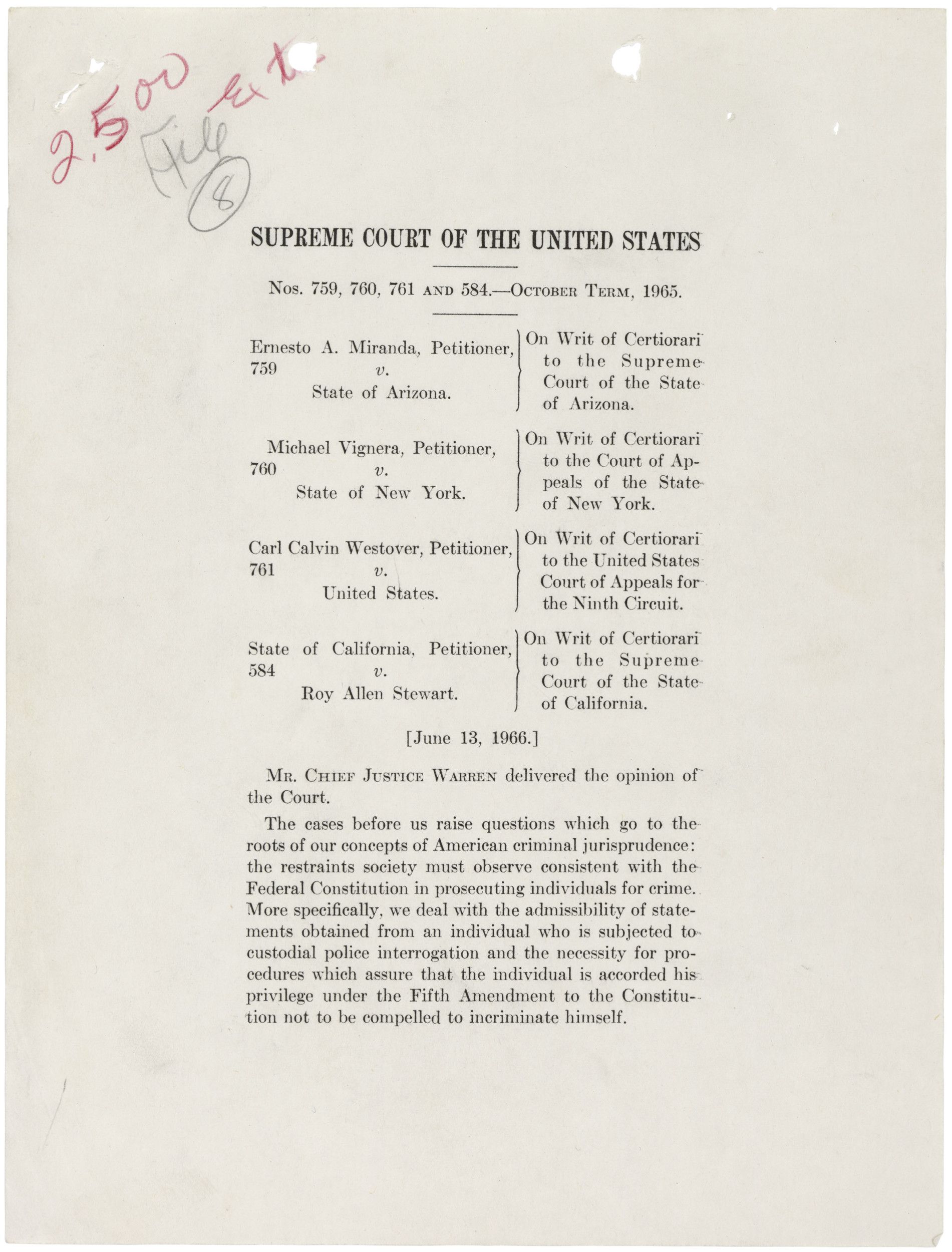
Opinion of the Court by Chief Justice Earl Warren in the Case of Miranda v. Arizona
Page 2
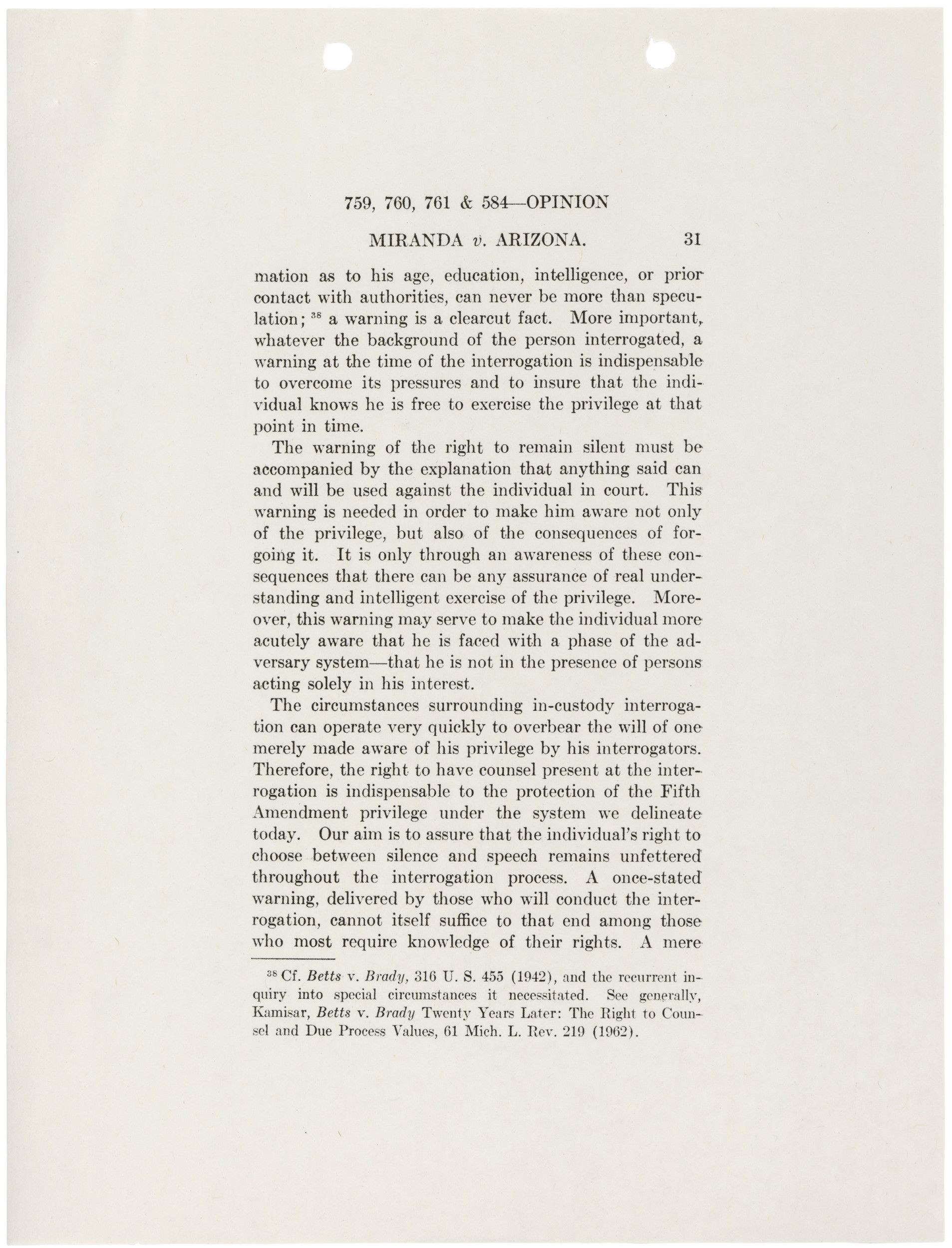
Document
Photograph of County Clerk 'Bun' Towner Swearing-in a Trial Jury in the Court House
ca. 1945
Additional details from our exhibits and publications
In this undated photograph, County Clerk "Bun" Towner swears in a jury of men and women before a trial begins. Amendment VI of the Bill of Rights gives the right to "a speedy and public trial, by an impartial jury of the state and district wherein the crime shall have been committed…"
This primary source comes from the Records of the U.S. Information Agency.
National Archives Identifier: 595379
Full Citation: Photograph of County Clerk 'Bun' Towner Swearing-in a Trial Jury in the Court House; ca. 1945; Records of the U.S. Information Agency, . [Online Version, https://docsteach.org/documents/document/photograph-of-county-clerk-bun-towner-swearingin-a-trial-jury-in-the-court-house, April 26, 2024]Photograph of County Clerk 'Bun' Towner Swearing-in a Trial Jury in the Court House
Page 1
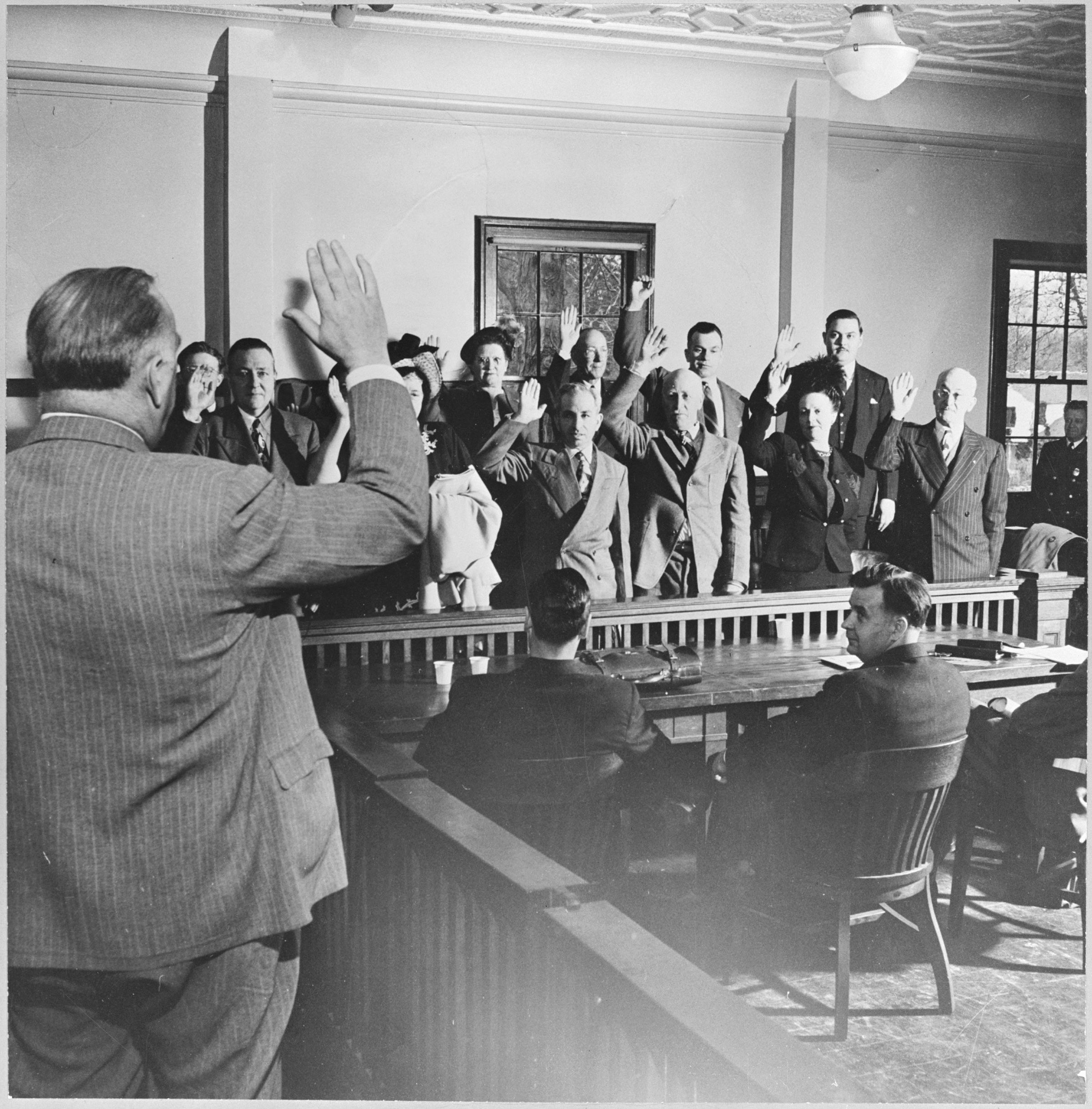
Document
The Unfortunate Death of Major Andre (Adjutant General to the English Army) at Head Quarters in New York, October 2. 1780, who was found within the American Lines in the character of a spy
1780 (artwork 1783)
This is a copy of an engraving by John Goldar based on of a painting by Hugh Douglas Hamilton. The full title is "The Unfortunate Death of Major Andre (Adjutant General to the English Army) at Head Quarters in New York, October 2. 1780, who was found within the American Lines in the character of a Spy."
This primary source comes from the Records from the Office of War Information.
National Archives Identifier: 535747
Full Citation: Photograph 208-LU-25K(7); The Unfortunate Death of Major Andre (Adjutant General to the English Army) at Head Quarters in New York, October 2. 1780, who was found within the American Lines in the character of a spy; 1780 (artwork 1783); Photographs Depicting "Life in the United States", 1942 - 1946; Records from the Office of War Information, ; National Archives at College Park, College Park, MD. [Online Version, https://docsteach.org/documents/document/death-major-andre, April 26, 2024]The Unfortunate Death of Major Andre (Adjutant General to the English Army) at Head Quarters in New York, October 2. 1780, who was found within the American Lines in the character of a spy
Page 1
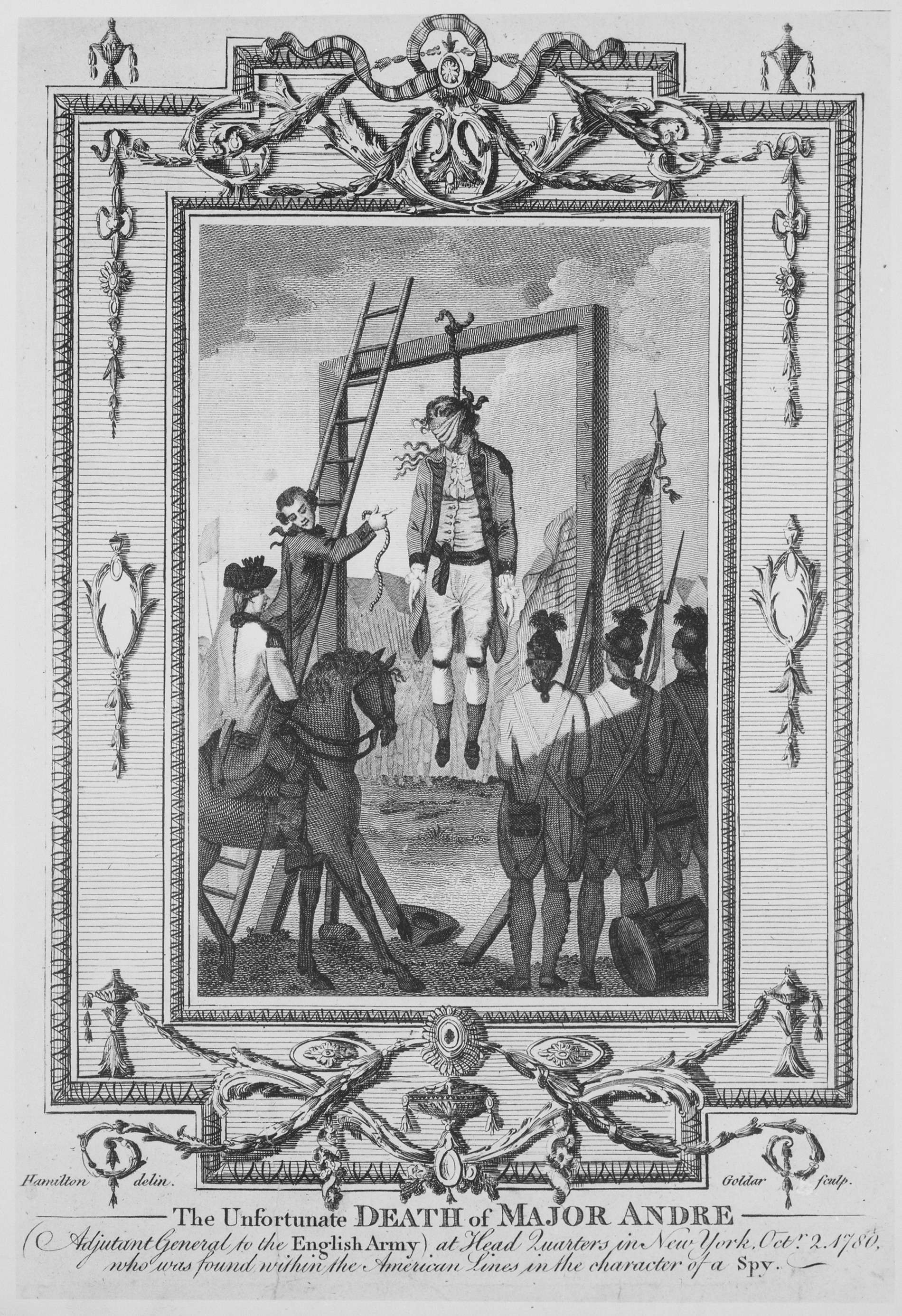
Document
Map of the United States Including Western Territories
12/1848
This map was ordered by President James K. Polk to accompany his annual message to Congress in December 1848. Principal draftsman Ephraim Gilman, of the U.S. General Land Office, created the map to show all of the existing states, territories, proposed territories, and the area of the Mexican Cession in the southwest acquired by the terms of the Treaty of Guadalupe Hidalgo, which ended the war with Mexico.
It represents Polk's conception, as a Southern Democrat, of how to divide up the new territory acquired through the Treaty. It became the starting point of debates in Congress over slavery and westward expansion.
It represents Polk's conception, as a Southern Democrat, of how to divide up the new territory acquired through the Treaty. It became the starting point of debates in Congress over slavery and westward expansion.
This primary source comes from the Records of the U.S. House of Representatives.
National Archives Identifier: 2127339
Full Citation: Map of the United States Including Western Territories; 12/1848; (HR29A-B1); General Records, 1791 - 2010; Records of the U.S. House of Representatives, ; National Archives Building, Washington, DC. [Online Version, https://docsteach.org/documents/document/western-territories-map, April 26, 2024]Map of the United States Including Western Territories
Page 2
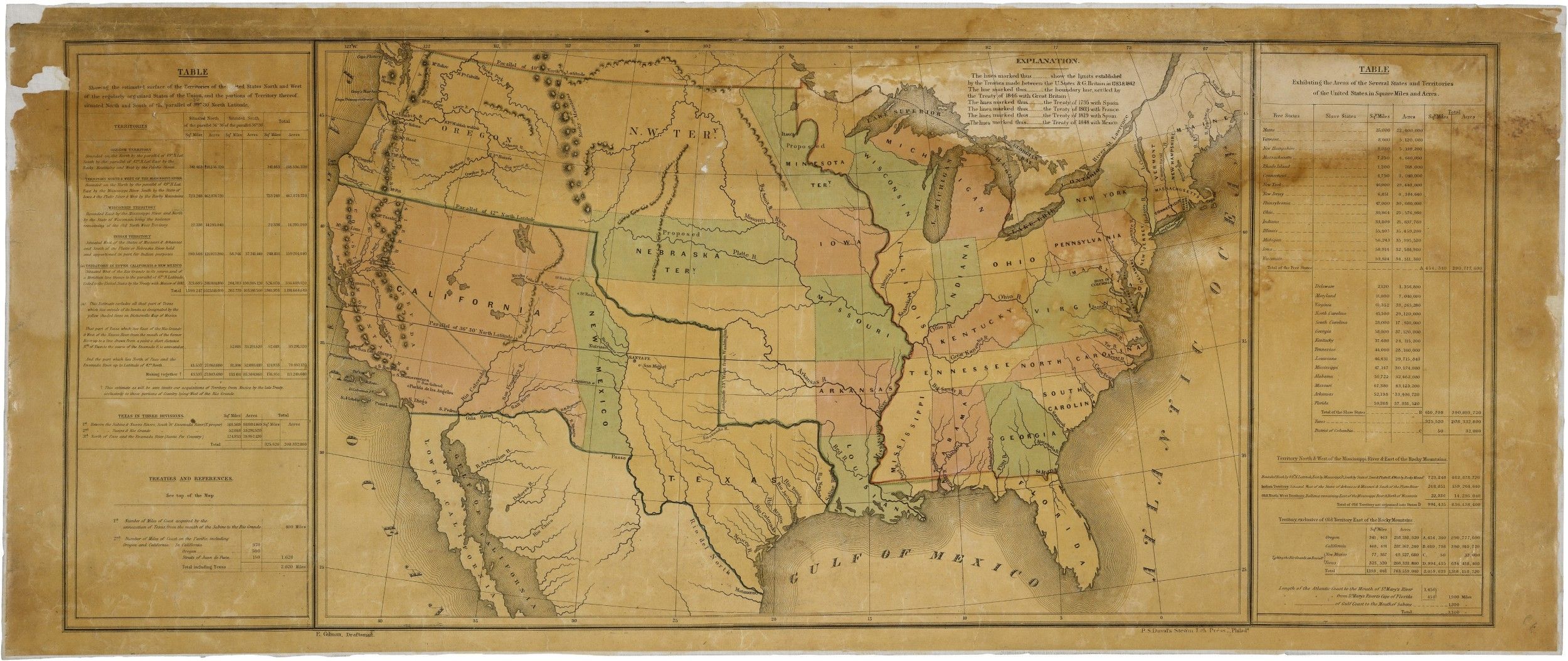
Document
Save Freedom of Worship
1941 - 1945
This World War II poster includes a painting by artist Norman Rockwell, illustrating "freedom of worship" – one of four freedoms outlined by President Franklin Roosevelt during his annual message to Congress (State of the Union speech) on January 6, 1941. The speech became known as FDR's "Four Freedoms Speech" due to a short closing portion in which he described his vision for extending American ideals throughout the world.
With World War II underway in Europe and the Pacific, FDR asked the American people to work hard to produce armaments for the democracies of Europe, to pay higher taxes, and to make other wartime sacrifices. Roosevelt presented his reasons for American involvement, making the case for continued aid to Great Britain and greater production of war industries at home. In helping Britain, President Roosevelt stated, the United States was fighting for the universal freedoms that all people deserved.
Roosevelt proposed four fundamental freedoms that all people should have. His "four essential human freedoms" included some phrases already familiar to Americans from the Bill of Rights, as well as some new phrases: freedom of speech, freedom of worship, freedom from want, and freedom from fear. These symbolized America's war aims and gave the American people a mantra to hold onto during the war.
Norman Rockwell created a series of paintings illustrating the four freedoms as international war goals that went beyond just defeating the Axis powers. In the series, he translated abstract concepts of freedom into four scenes of everyday American life. Although the federal government initially rejected Rockwell's offer to create paintings on the four freedoms theme, the images were publicly circulated when The Saturday Evening Post, one of the nation's most popular magazines, commissioned and reproduced the paintings. After winning public approval, the paintings served as the centerpiece of a massive U.S. war bond drive and went on a national tour to raise money for the war effort.
After the war, the four freedoms appeared again, embedded in the Charter of the United Nations.
With World War II underway in Europe and the Pacific, FDR asked the American people to work hard to produce armaments for the democracies of Europe, to pay higher taxes, and to make other wartime sacrifices. Roosevelt presented his reasons for American involvement, making the case for continued aid to Great Britain and greater production of war industries at home. In helping Britain, President Roosevelt stated, the United States was fighting for the universal freedoms that all people deserved.
Roosevelt proposed four fundamental freedoms that all people should have. His "four essential human freedoms" included some phrases already familiar to Americans from the Bill of Rights, as well as some new phrases: freedom of speech, freedom of worship, freedom from want, and freedom from fear. These symbolized America's war aims and gave the American people a mantra to hold onto during the war.
Norman Rockwell created a series of paintings illustrating the four freedoms as international war goals that went beyond just defeating the Axis powers. In the series, he translated abstract concepts of freedom into four scenes of everyday American life. Although the federal government initially rejected Rockwell's offer to create paintings on the four freedoms theme, the images were publicly circulated when The Saturday Evening Post, one of the nation's most popular magazines, commissioned and reproduced the paintings. After winning public approval, the paintings served as the centerpiece of a massive U.S. war bond drive and went on a national tour to raise money for the war effort.
After the war, the four freedoms appeared again, embedded in the Charter of the United Nations.
This primary source comes from the Records of the Office of Government Reports.
National Archives Identifier: 513712
Full Citation: Poster 44-PA-263; Save Freedom of Worship; 1941 - 1945; World War II Posters, 1942 - 1945; Records of the Office of Government Reports, ; National Archives at College Park, College Park, MD. [Online Version, https://docsteach.org/documents/document/save-freedom-of-worship, April 26, 2024]Save Freedom of Worship
Page 1
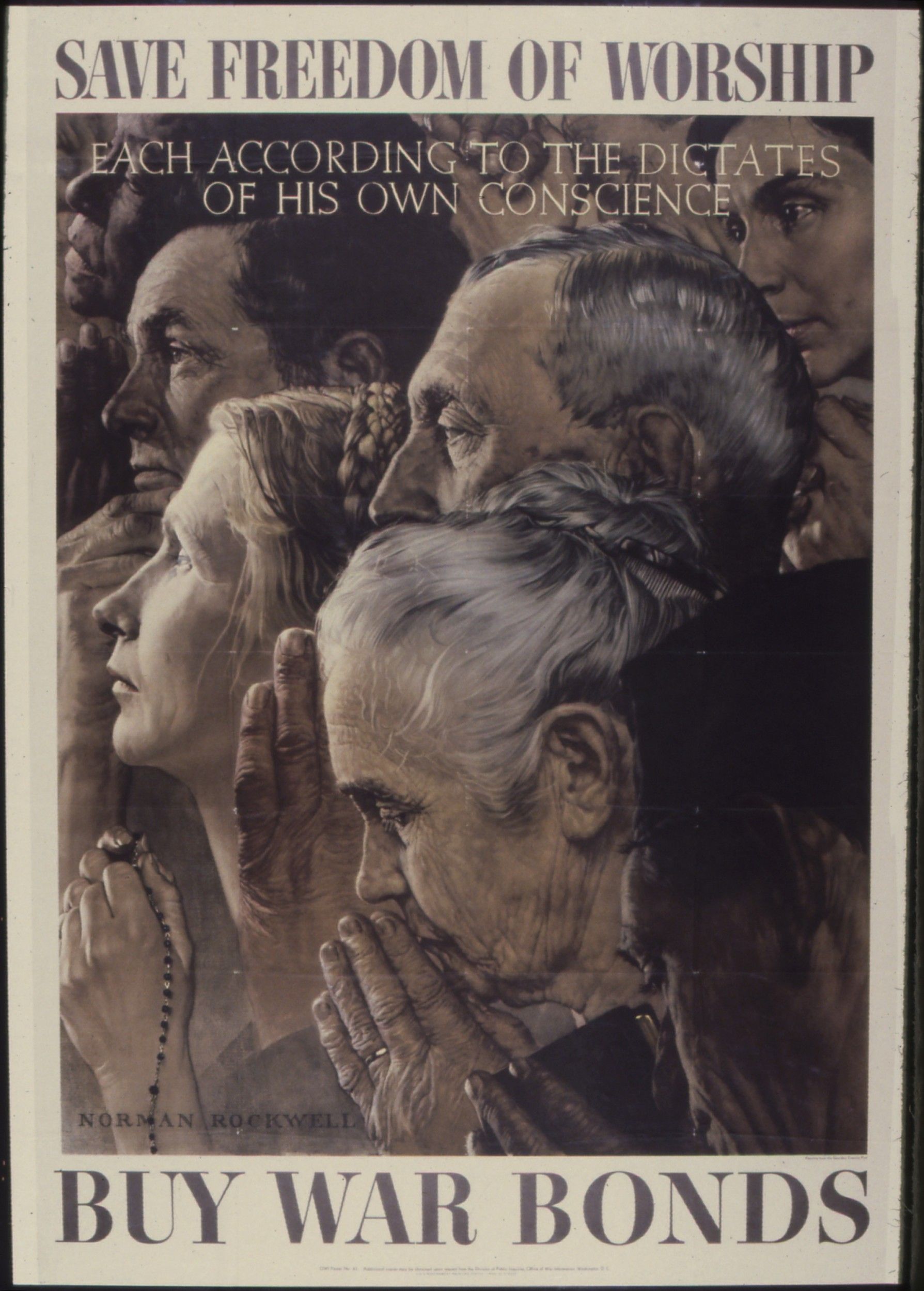
Document
Civil Rights March on Washington, D.C. [Leaders marching from the Washington Monument to the Lincoln Memorial]
8/28/1963
Civil Rights March on Washington, D.C. [Leaders marching from the Washington Monument to the Lincoln Memorial. In the front row, from left are: Whitney M. Young, Jr., Executive Director of the National Urban League; Roy Wilkins, Executive Secretary of the National Association for the Advancement of Colored People; A. Philip Randolph, Brotherhood of Sleeping Car Porters, American Federation of Labor (AFL), and a former vice president of the American Federation of Labor and Congress of Industrial Organizations (AFL-CIO); Walter P. Reuther, President, United Auto Workers Union; and Arnold Aronson, Secretary of the Leadership Conference on Civil Rights.]
This primary source comes from the Records of the U.S. Information Agency.
National Archives Identifier: 542010
Full Citation: 306-SSM-4C-46-14; Civil Rights March on Washington, D.C. [Leaders marching from the Washington Monument to the Lincoln Memorial]; 8/28/1963; Miscellaneous Subjects, Staff and Stringer Photographs, 1961–1974; Records of the U.S. Information Agency, ; National Archives at College Park, College Park, MD. [Online Version, https://docsteach.org/documents/document/civil-rights-march-on-washington-dc-[leaders-marching-from-the-washington-monument-to-the-lincoln-memorial], April 26, 2024]Civil Rights March on Washington, D.C. [Leaders marching from the Washington Monument to the Lincoln Memorial]
Page 1
